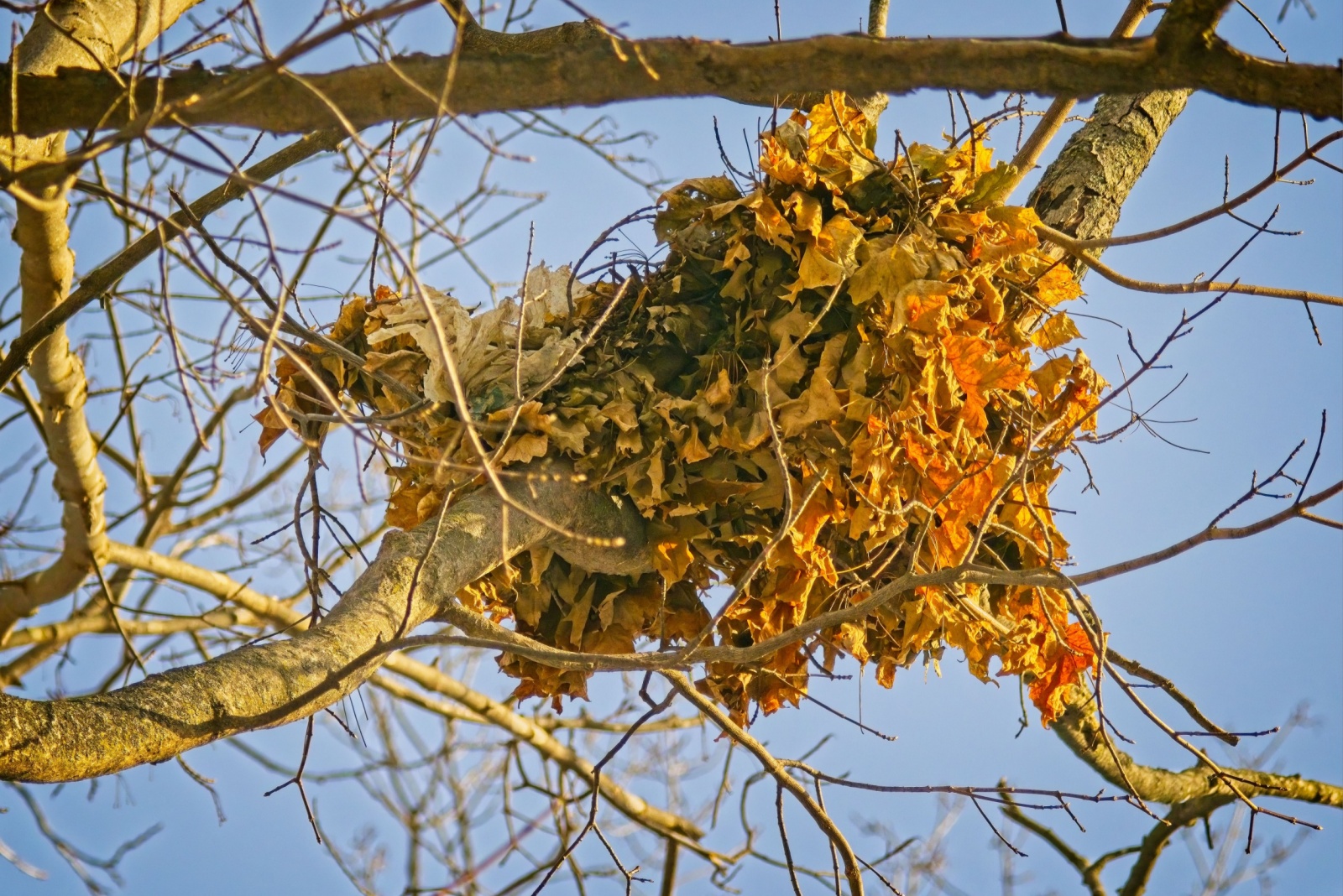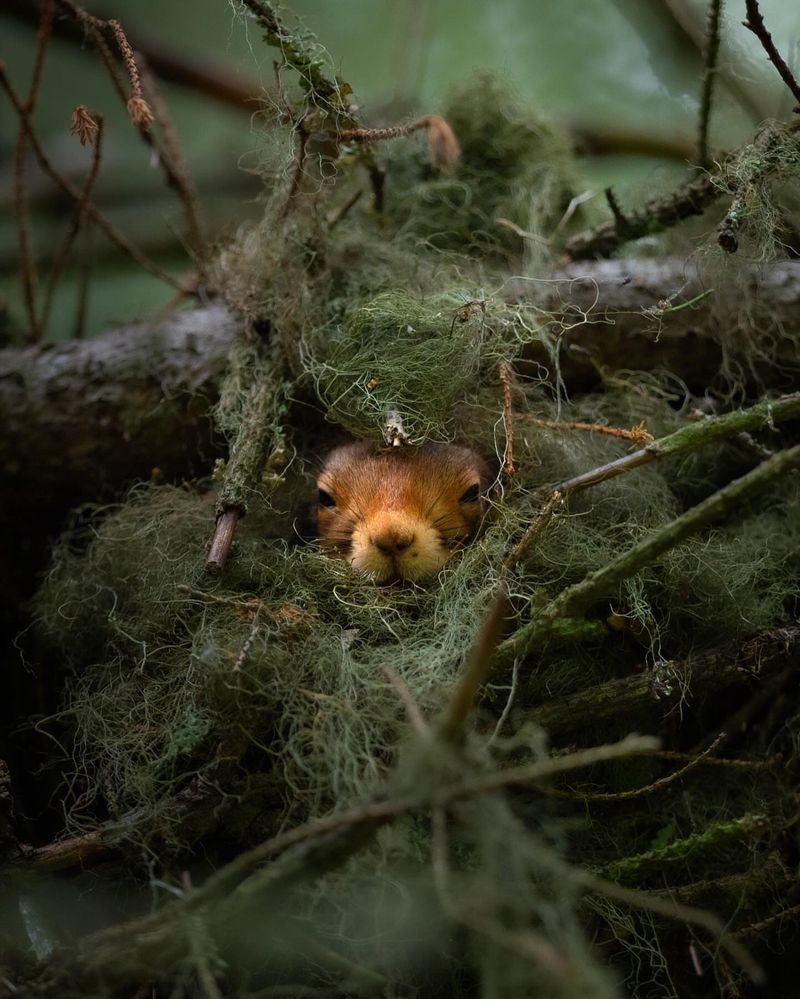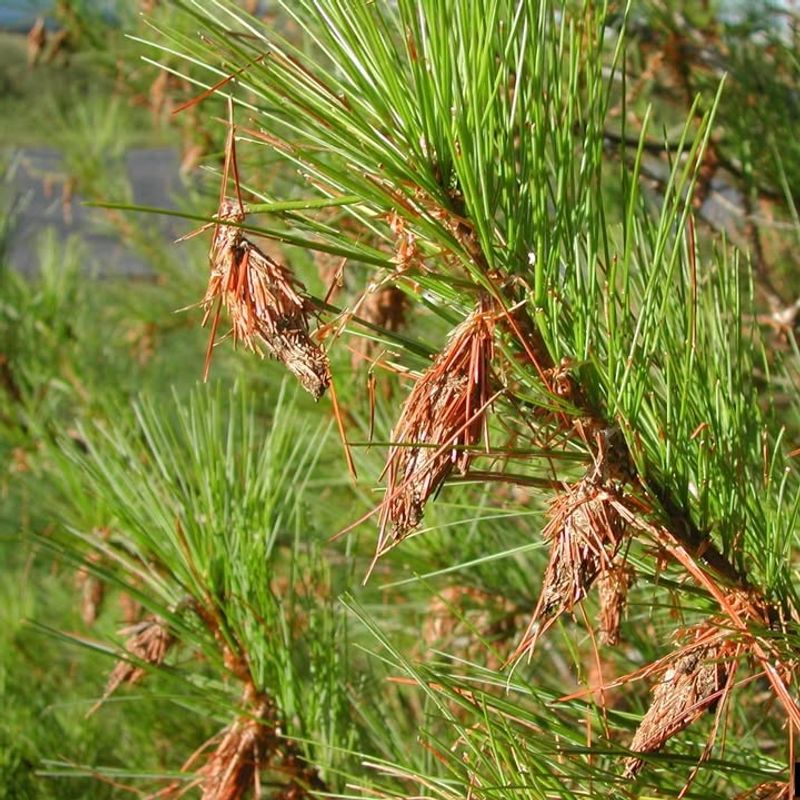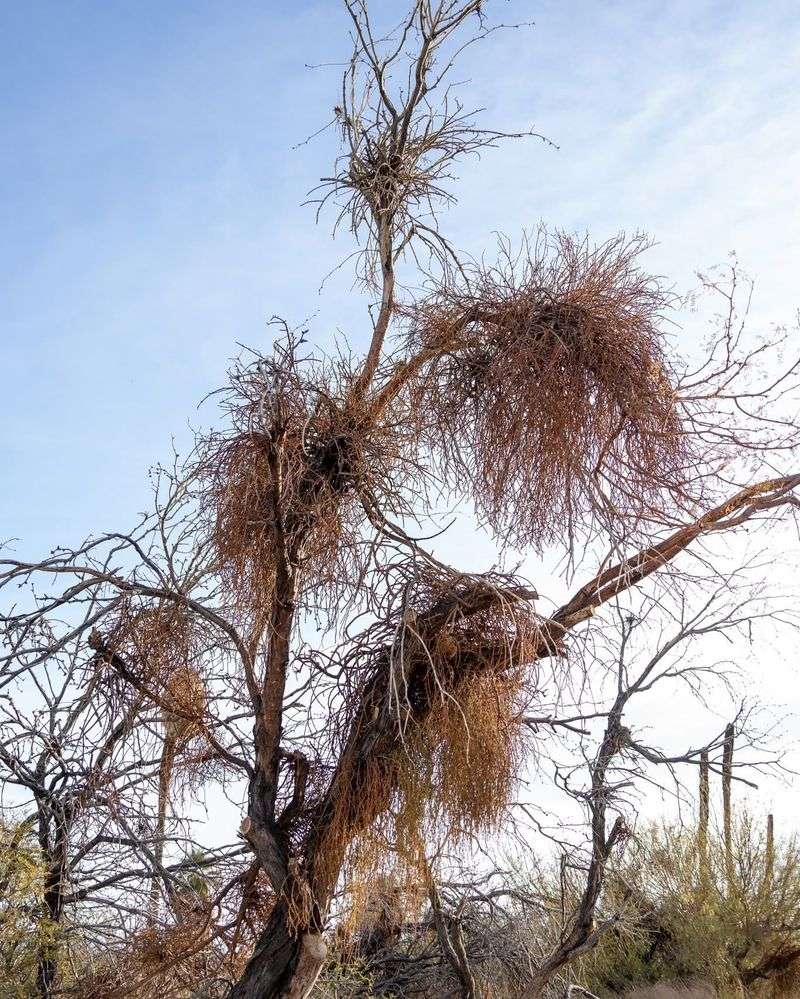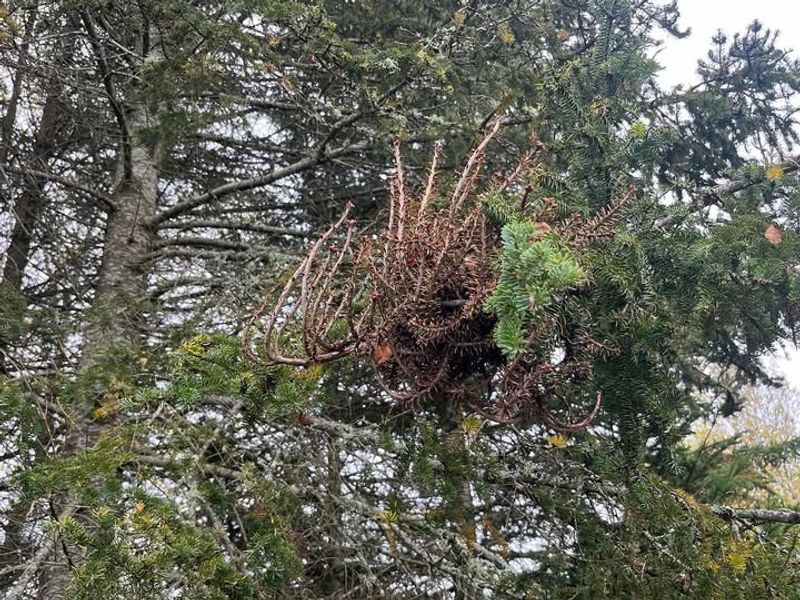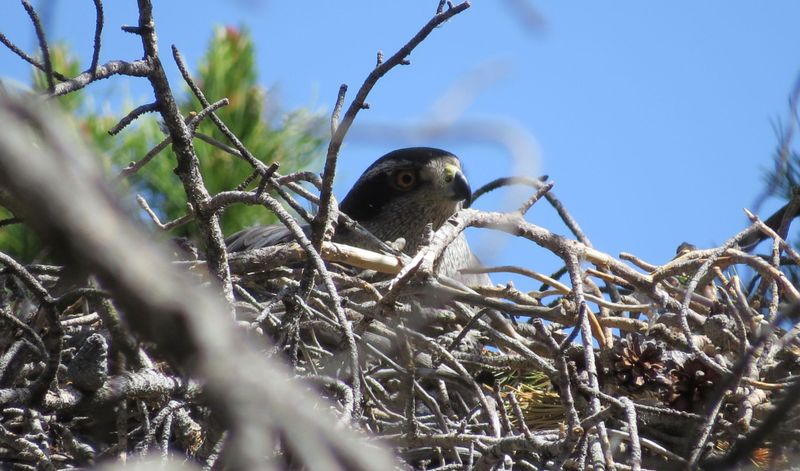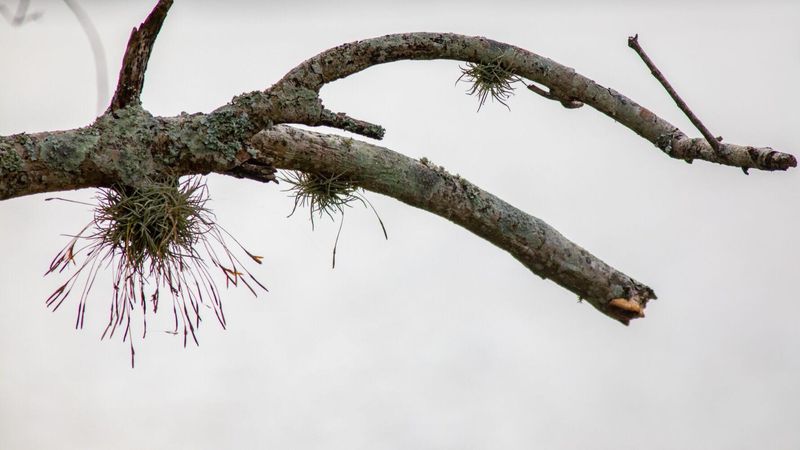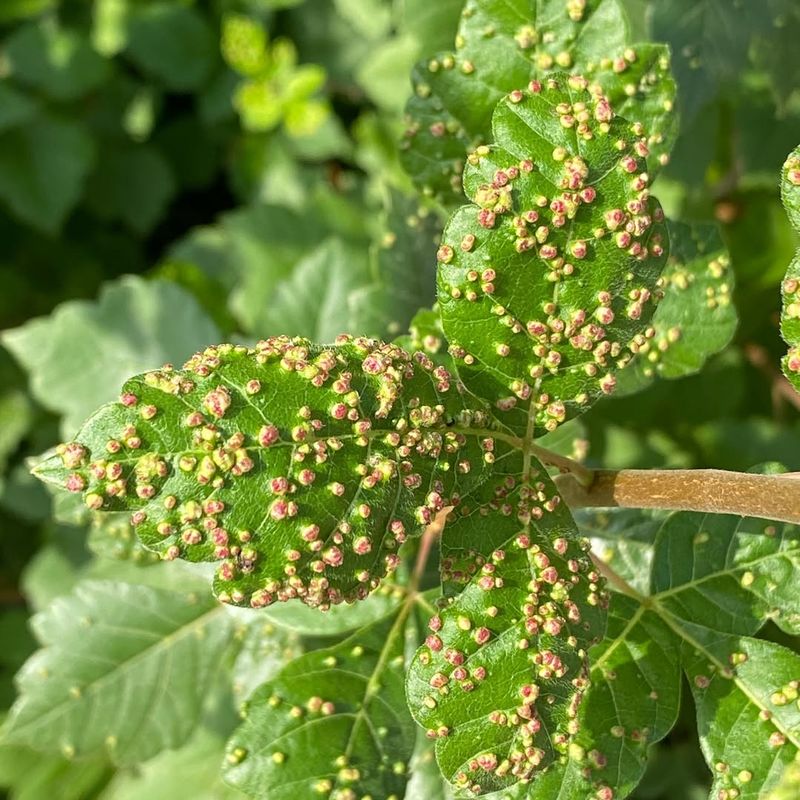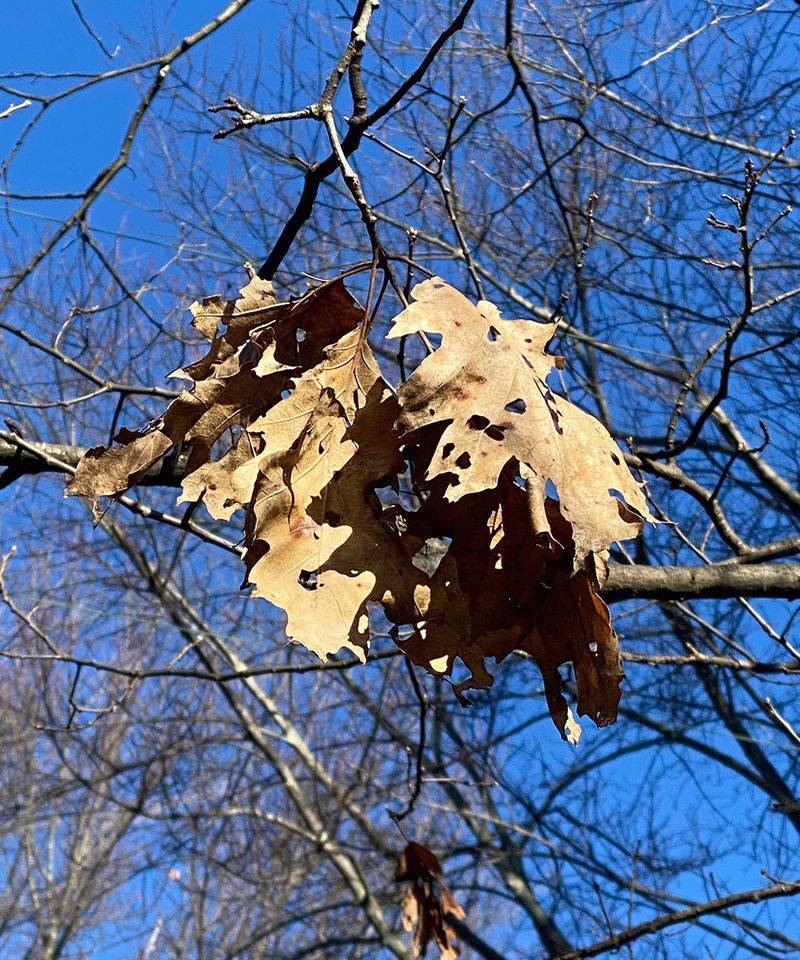Have you ever spotted what looks like a giant nest high up in a Mississippi tree and wondered what creature built it? Those mysterious clumps aren’t always bird nests like you might think.
Nature has some surprising explanations for these odd formations, and understanding what they really are can help you appreciate the wildlife around you even more.
1. Squirrel Dreys Built For Shelter
Squirrels are master builders who create cozy homes called dreys that often get mistaken for bird nests. Unlike bird nests, dreys are usually bigger, messier, and packed with layers of leaves, twigs, and moss.
These resourceful critters build their homes in tree forks or against trunks, creating structures that can be two feet wide. Squirrels often have multiple dreys scattered throughout their territory, switching between them for safety and comfort.
During winter months, you’ll spot these leaf bundles more easily when trees lose their foliage.
2. Bagworm Infestations Damaging Trees
Bagworms create spindle-shaped cases that dangle from branches like tiny ornaments, but they’re actually destructive pests. Each bag contains a caterpillar that feeds on tree foliage, potentially killing the host plant if left unchecked.
These insects prefer evergreens but will attack many tree species across Mississippi. The bags are woven from silk and bits of the host plant, making them blend in surprisingly well.
Homeowners should remove these bags by hand during fall and winter before the eggs hatch in spring.
3. Mistletoe Clumps Stealing Nutrients
Mistletoe grows in rounded clumps that look remarkably nest-like from a distance, especially during winter when surrounding leaves have fallen. This parasitic plant sends roots into tree branches, stealing water and nutrients for its own survival.
While small amounts won’t harm healthy trees, heavy infestations can weaken or even kill the host over time. Mississippi’s oak, elm, and pecan trees are particularly vulnerable to mistletoe invasions.
Interestingly, birds spread mistletoe seeds by eating the berries and depositing them on other branches.
4. Witches’ Broom Disease Clusters
Witches’ broom creates bizarre clusters of tangled branches that sprout densely from a single point, forming nest-like masses. Various fungi, viruses, or even insects can trigger this abnormal growth pattern in affected trees.
The name comes from old folklore, as people thought these strange formations looked like brooms witches used for flying. Trees with witches’ broom can still survive for years, though the affected branches won’t produce normal growth.
Pruning infected sections helps prevent the condition from spreading to healthy parts of the tree.
5. Abandoned Hawk Or Crow Nests
Red-tailed hawks and crows build substantial nests that can measure three feet across, dwarfing typical songbird homes. After breeding season ends, these nests sit empty but remain visible for months or even years in Mississippi trees.
Hawks prefer tall pines and hardwoods with clear views of surrounding hunting grounds. Their nests are constructed from thick sticks and lined with softer materials like bark strips and moss.
Sometimes other animals, including owls or squirrels, will move into these abandoned structures rather than building their own.
6. Ball Moss Growing In Clumps
Ball moss isn’t actually moss at all but rather a relative of Spanish moss that forms rounded, grayish-green clumps on branches. Unlike parasites, this air plant simply uses trees as a perch while gathering moisture and nutrients from rainfall and air.
Southern Mississippi trees, especially live oaks and cypresses, frequently host these harmless residents. The clumps can grow quite large, sometimes reaching softball size or bigger.
Many people mistake ball moss clusters for nests because of their rounded shape and fuzzy texture from a distance.
7. Galls Caused By Insects Or Mites
Galls are abnormal growths that trees produce in response to insects, mites, or other organisms laying eggs in their tissues. Some galls cluster together, creating lumpy masses that might look like nests from below.
Oak trees throughout Mississippi commonly develop various types of galls, ranging from small bumps to baseball-sized spheres. While they might look concerning, most galls don’t seriously harm the tree’s overall health.
Each gall type is usually caused by a specific insect species, making them fascinating to identify for nature enthusiasts.
8. Leaf Debris Caught In Branches
Sometimes what appears to be a carefully constructed nest is simply leaves, twigs, and other debris that got tangled in tree branches during storms. Wind can wedge surprising amounts of material into V-shaped branch forks, creating convincing nest lookalikes.
After severe weather events, Mississippi trees often collect these accidental piles that persist for weeks or months. Spanish moss, plastic bags, and even lost kites can contribute to these deceptive formations.
Unlike real nests, these random accumulations lack the woven structure and deliberate placement animals use.

